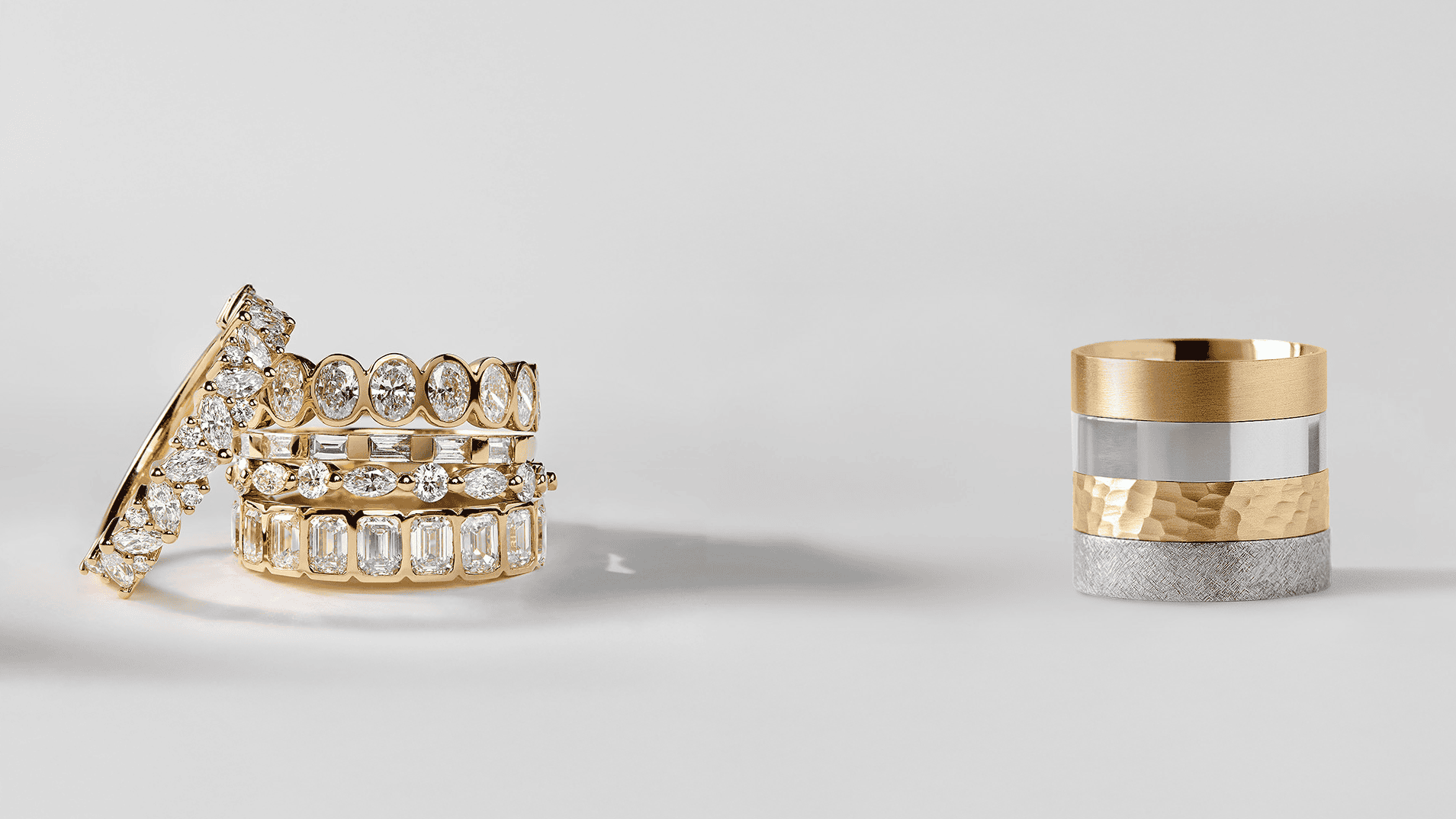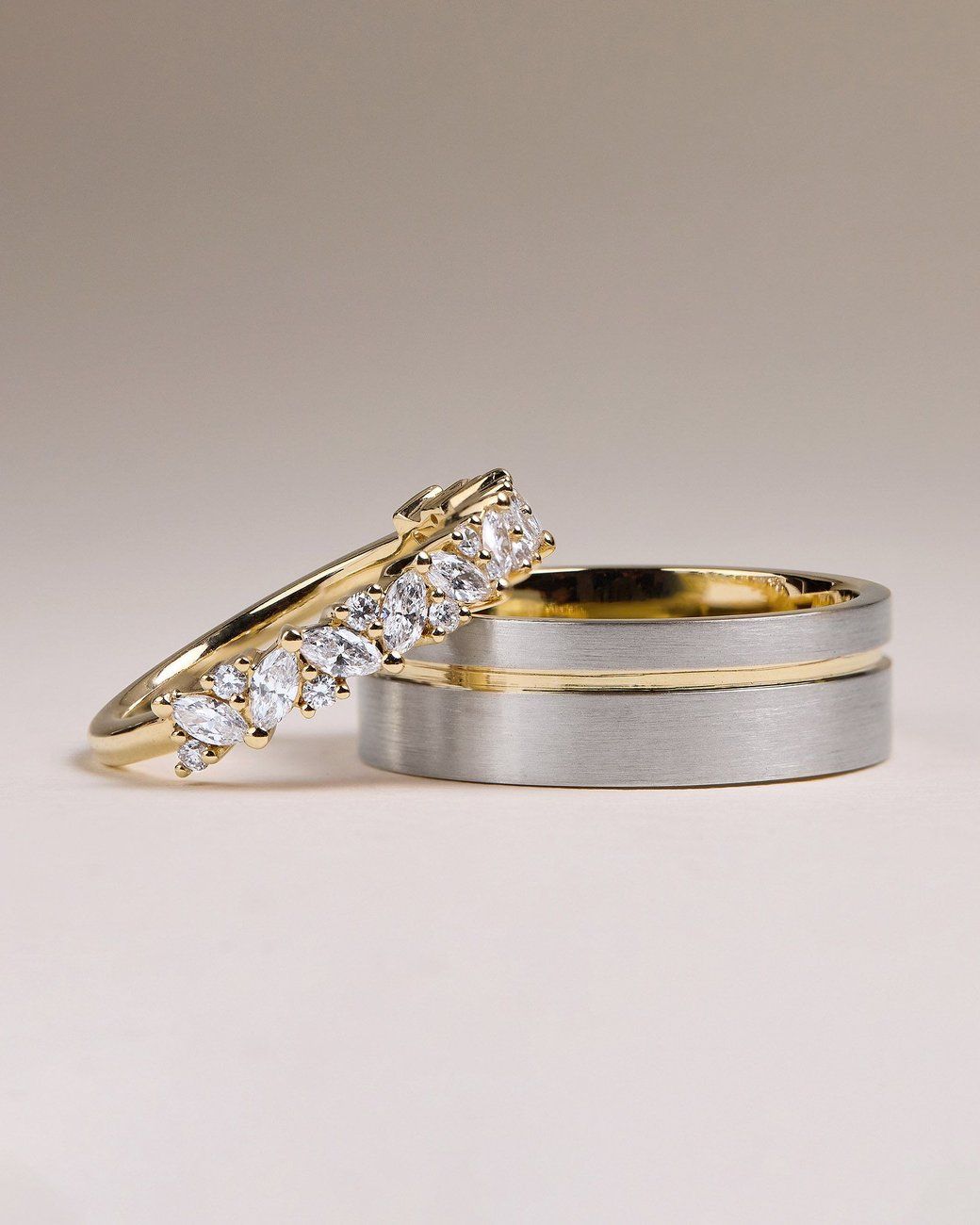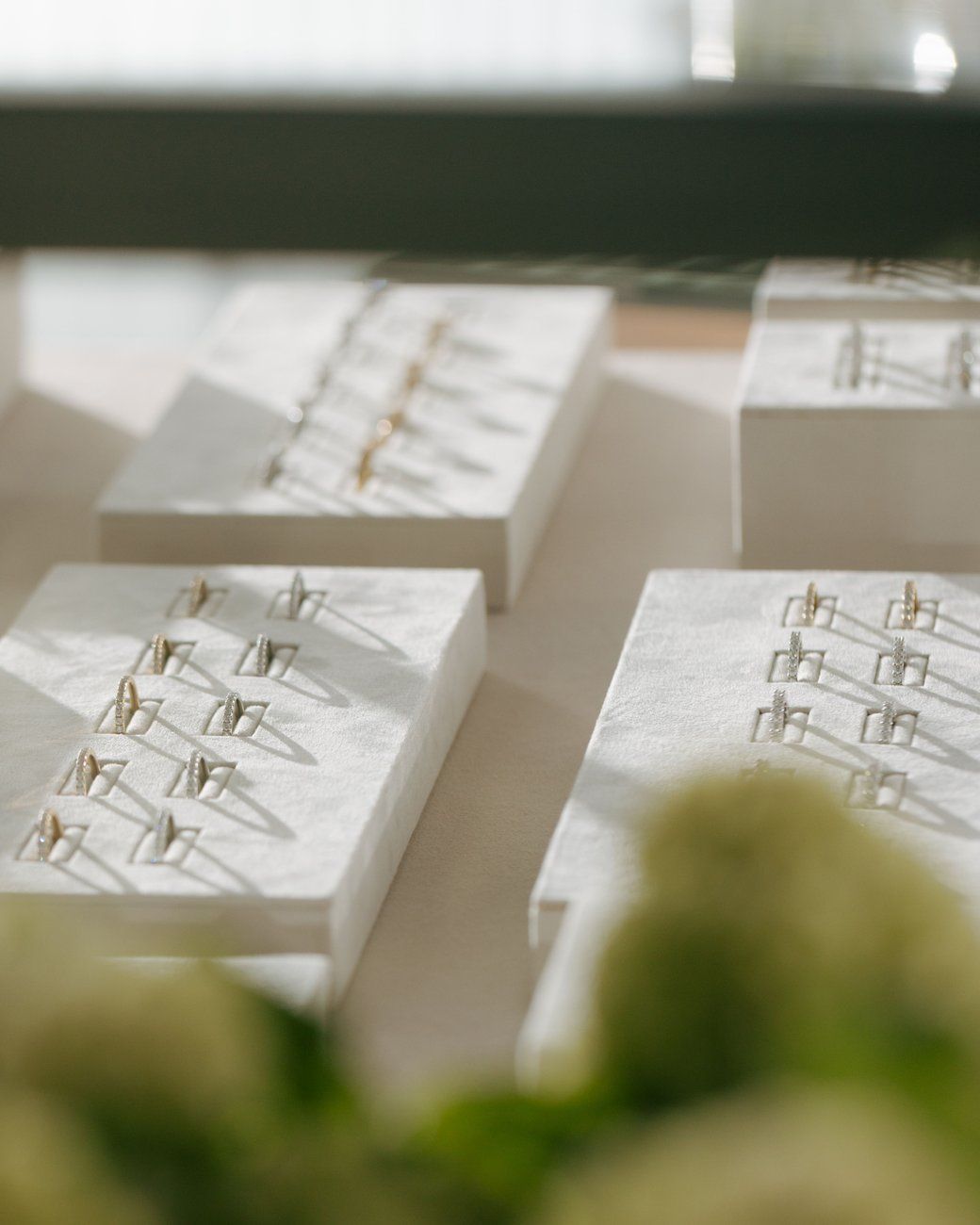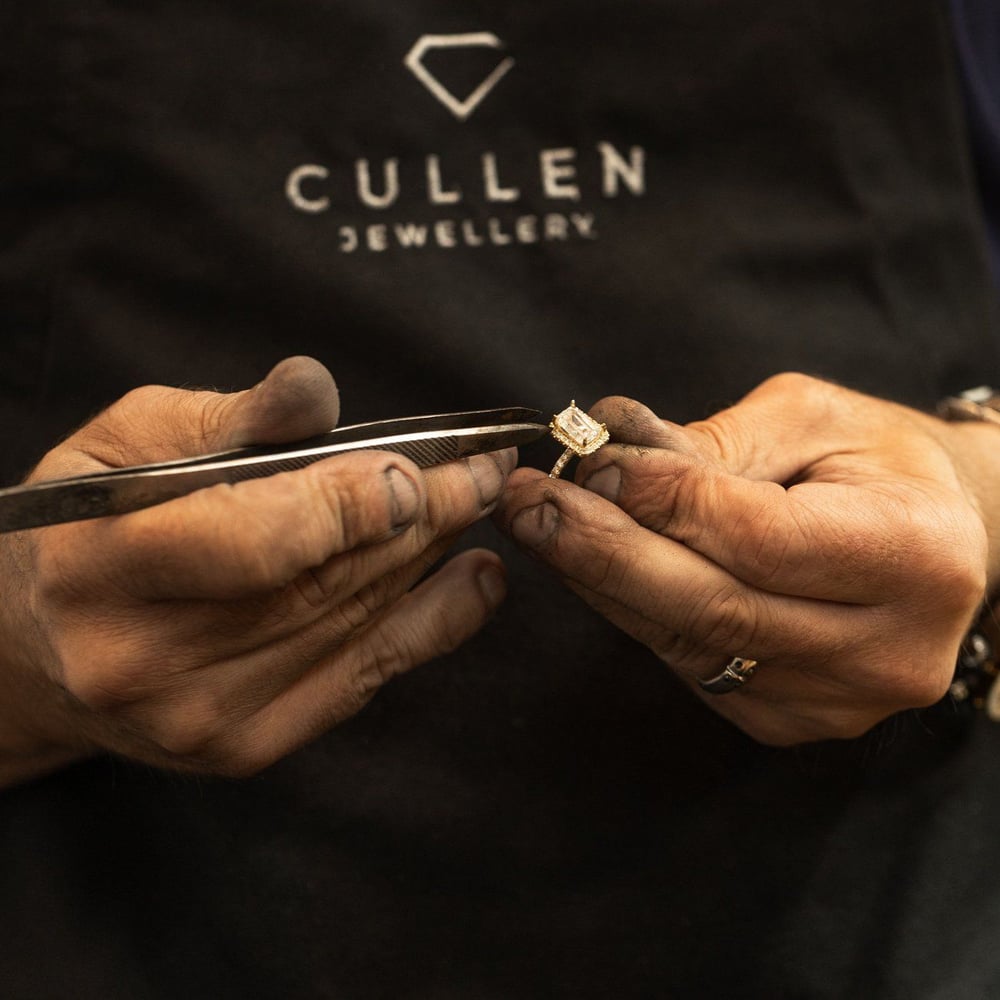
Across the globe, wedding rings represent the pledge of marriage between a bride and a groom. Its circular form has neither beginning nor end, a metaphor for eternal love and commitment. But have you ever wondered how wedding rings came to be the most recognisable symbol of love “til death do we part”? We have, so we set out to uncover the mysterious origins of wedding rings through the ages.
The ancient origins of wedding bands
The tradition of wedding rings dates back over 5,000 years to ancient Egypt. Egyptians viewed the circle as a symbol of eternity and believed that the vein in the left ring finger was the vein of love or “vena amoris” connected directly to the heart. Married couples wore braided reeds or strips of leather on that finger to signify their bond.
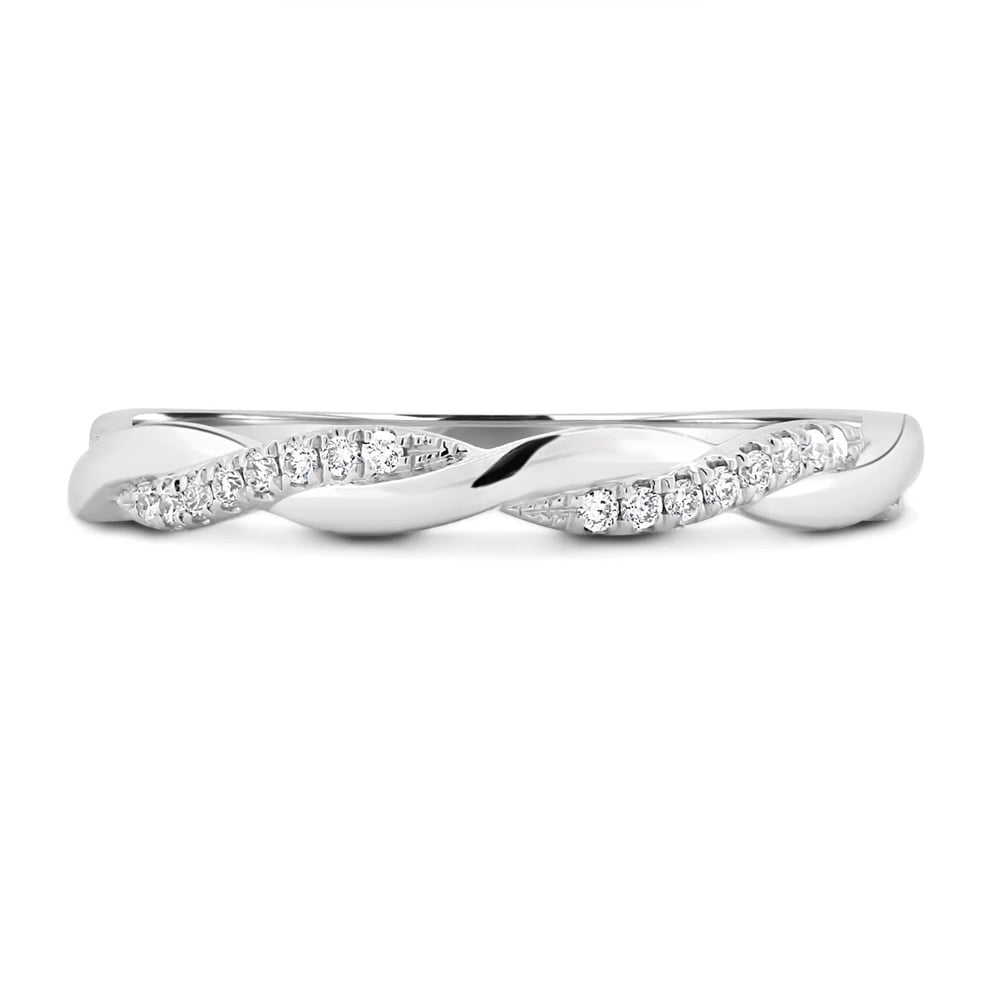
Wedding rings in Roman times
The ancient Romans, however, were less sentimental. They used rings, typically made of iron, to symbolize ownership rather than love. Only later did the Greek Orthodox Church introduce the custom of wedding rings for both bride and groom in a move that signified mutual faithfulness and obedience.
Wedding rings in Medieval Europe
In Medieval Europe, wedding rings regained their original meaning of love and devotion, forever immortalised in the words of traditional wedding vows written in 1549 that we still use today: “With this ring, I seal my promise, to be your faithful and loving spouse”.
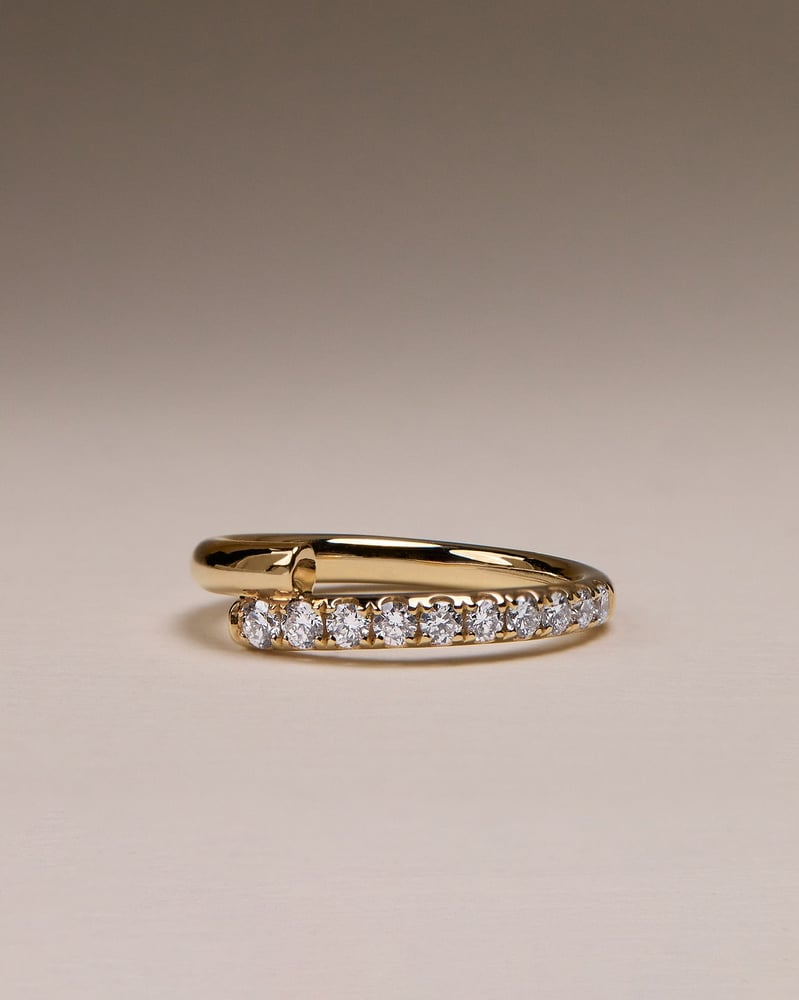
Fede rings, featuring two clasped hands, were popular during this period. However, by the 1600s, the fede motif was incorporated into gimmel rings, which featured two or sometimes three interlocking bands. During the engagement, each lover wore one band, and at the wedding ceremony, the groom would place his band onto the bride’s finger, joining the rings into a unified set. The complete gimmel ring typically displayed two right hands clasped together.
Around the same time, the fede motif evolved into the Claddagh ring, which depicted two hands holding a heart. Some gimmel rings with the Claddagh design featured a third center band adorned with a gemstone held by the clasped hands.
Renaissance and Elizabethan poesy rings
During the Renaissance and Elizabethan eras, poesy rings became popular, inscribed with poetic phrases inside or outside the band, such as ‘ As gold is pure, so love is sure’. Unsurprisingly, touching messages like these are still popular today, and many couples opt to add an engraving to their Cullen Jewellery wedding bands .
The rise of wedding rings for men
Traditionally, wedding rings were primarily worn by women, although the Christian church encouraged the exchange of rings as a way to help keep men faithful. However, it wasn't until World War II that the practice of men wearing wedding rings gained momentum. While on deployment, American and European soldiers began to wear wedding rings as a reminder of their wives and sweethearts back home, and the tradition stuck. The popularity of wedding rings for men was no doubt also helped along by the budgeoning film industry and the romanticised wedding scenes in block buster movies like Philadephia Story (1950) and The Sound of Music (1965).
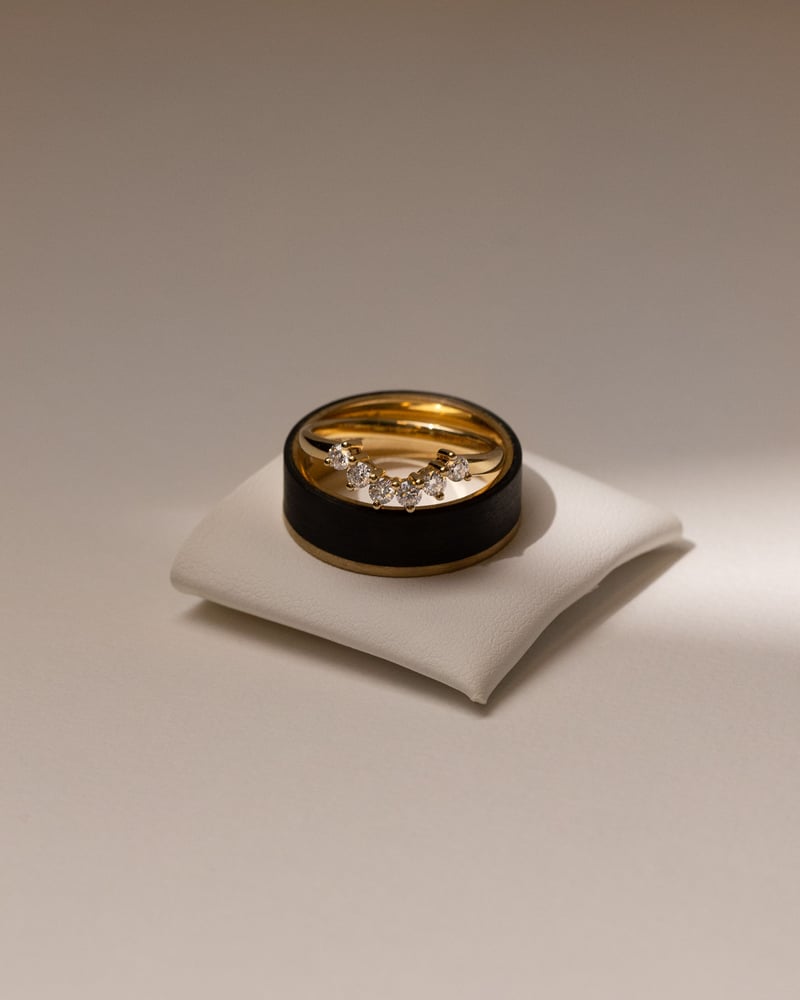
Cullen Jewellery, a story of unreasonable care
Today, wedding bands continue to be the ultimate symbol of love and devotion. At Cullen Jewellery, we blend traditional craftsmanship with modern technology to craft custom wedding rings made to endure. Every piece is designed to last a lifetime of cherished moments.
